Dragonflies and damselflies have been flying over wetlands, meadows, and woodlands for over 300 million years, making them one of the most ancient orders of insects found on Earth today. The fossil record shows the predecessors of these bugs we’re so fond of today were much bigger when they lived on the now re-arranged Paleozoic supercontinent of Pangaea.
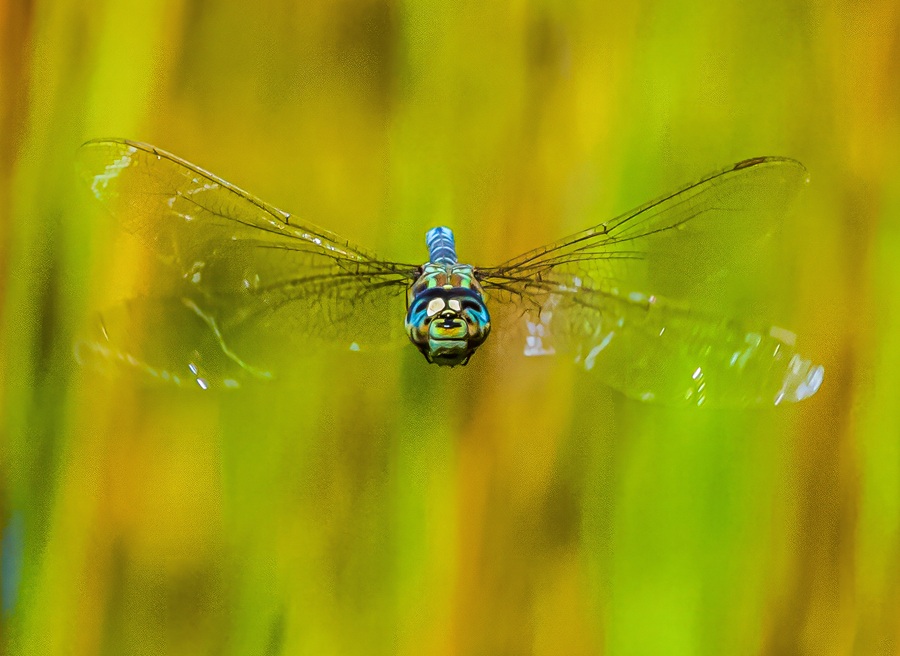
This insect, mostly bright-colored, is found on almost every continent. And yet many people have never seen or observed dragonflies or damselflies. Imagine our good fortune to have these winged jewels living around the edges of virtually every pond on Cape Cod.
These beautiful yet ferocious insects live dual lives. A large part happens out of view, among the weeds and detritus on the bottoms of our coastal-plain ponds. That’s where small, spider-like nymphs live submerged for up to two years, molting their exoskeletons several times before emerging from the water, crawling up the stem of a plant or the piers of a boat dock, or a tree trunk, where one of nature’s true miracles occurs.
To see it is a once-in-a-lifetime event: the nymph dries out on the stem, its back splits open, and out of that emerges an adult dragonfly.
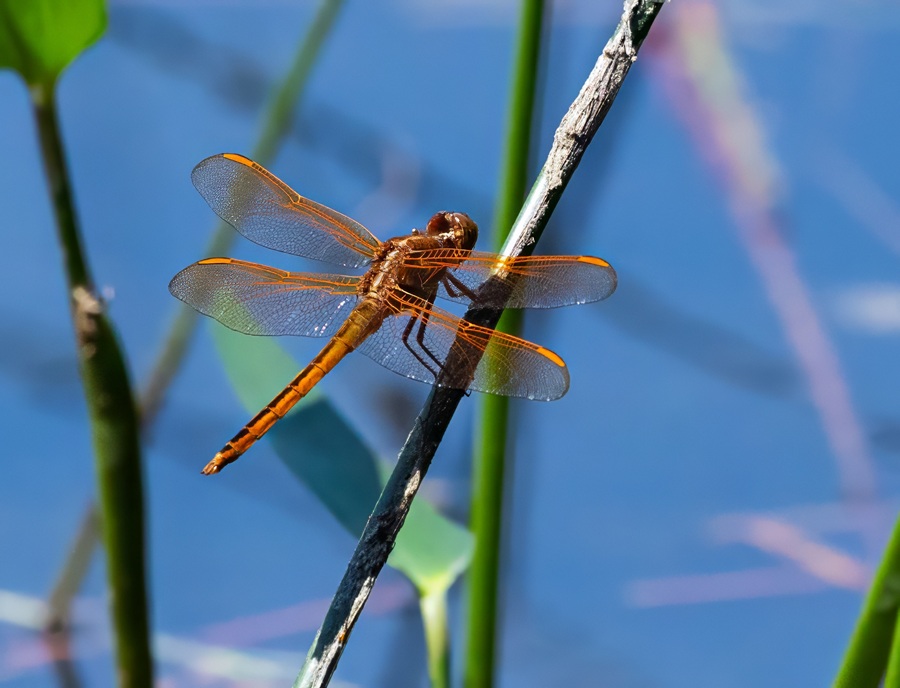
As you take your next walk along a pond’s edge, just look at some of the grasses growing out of the water. To the keen observer, the dried shells, called exuvia, of aquatic dragonfly nymphs will become obvious clinging to stems, usually about five feet from shore.
There, out on the grasses, sedges, and lily pads, is also where we see in flight a great variety of dragonflies and their petite cousins, the damselflies. Both are in the order Odonata. The word refers to the teeth — really the jaws — that these predatory insects use to crush their prey. They’re particularly fond of mosquitoes.
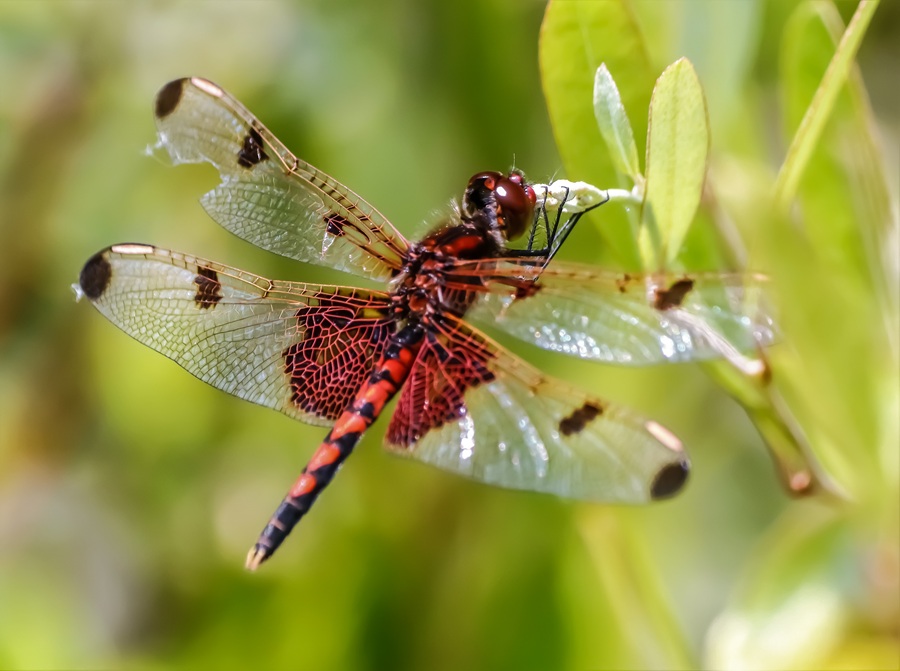
The dragonflies have two pairs of wings that extend perpendicularly from the body, large compound eyes, short antennae, a short thorax, and a long abdomen divided into 10 segments. While identification can be difficult, once the local and common species are learned, it becomes easier to sort them out; new species are often seen as the weeks of summer pass. Each dragonfly species has a particular flight period. Some are only a few weeks long, while others can be observed throughout the summer months.
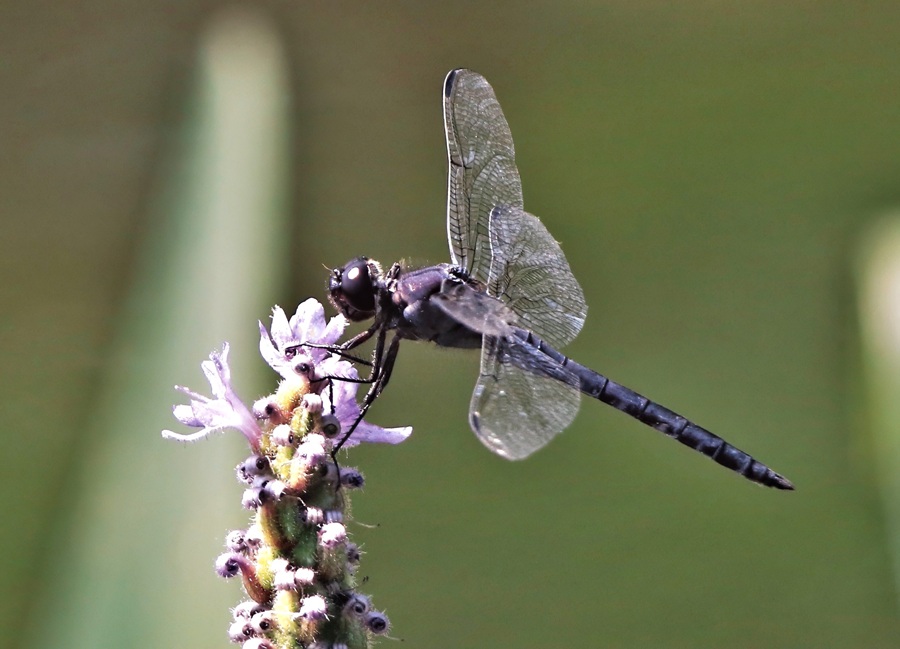
Then there are the small, thin, colorful cousins of the dragons. These are the damselflies, which have thinner bodies and smaller eyes than dragonflies and are resplendent in their different colors. Some are bright red, others bright orange or blue, and many species are a combination of black and blue. You’ll see them perched holding on to a thin grass with their bodies extending outward from the plant. While dragonflies sit with their wings splayed flat at rest, damselflies close their wings together.
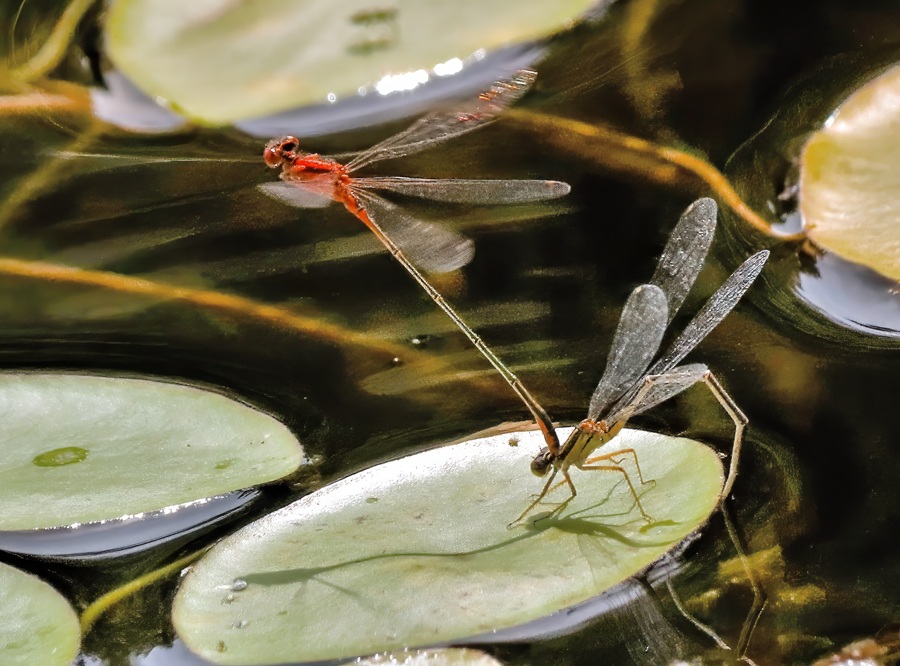
Both dragonflies and damsels are a photographer’s delight. It’s a challenge to photograph them, but doing so is a great way to learn species names using any of the local or regional Odonate identification guides.
We often see dragonflies flying in tandem. That is the male clasping the female just behind her head, using a pair of “cerci” located at the tip of his abdomen. This occurs prior to mating. But before depositing sperm into his mate, the male uses a set of small hook-like structures to scrape out any sperm from her reproductive organ that may have been deposited by previous males that have mated with her — quite a breeding strategy.
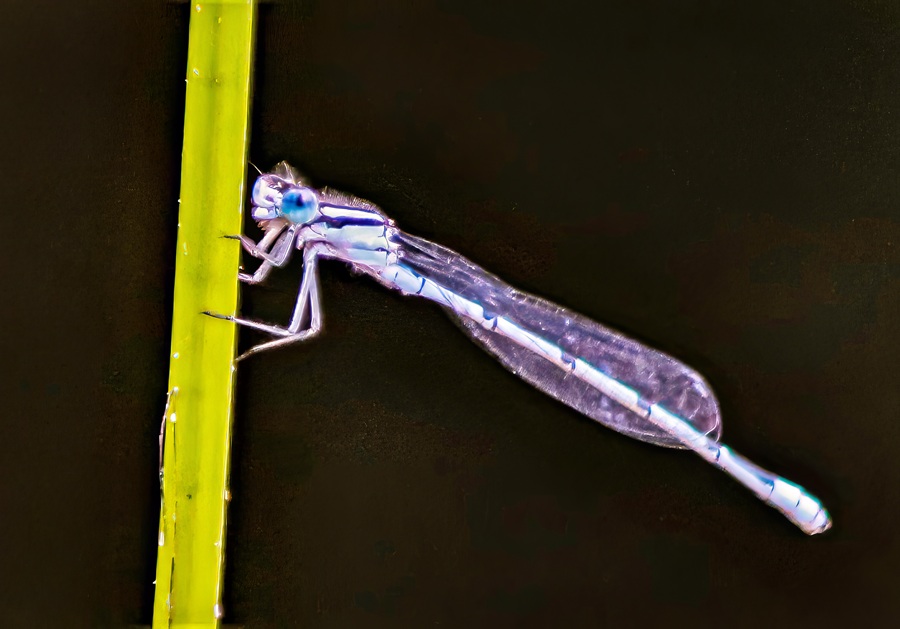
There is much more to know about these insects. But for now, the most important thing is that they can be observed easily around the edges of the pond just across the street or down the road from where you live. Spend a little time there with boots, water shoes, or even barefoot. Bring binoculars, a camera, or just your curiosity about all that makes up this great fabric of nature.
The dragonflies, in their bright colors, are easy to observe. Once you find, say, a slaty skimmer, big and completely dark blue, it’ll stay right around you, allowing itself to be admired.
